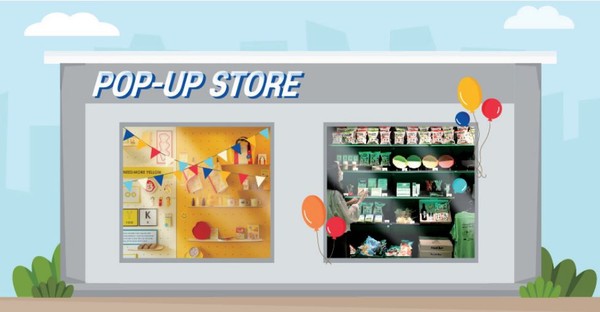College years are the perfect time for personal growth through expanding social networks and experiencing diverse cultures. Whether you’re an international student studying abroad, a transfer student enrolled in a Korean university, or here temporarily as an exchange student, stepping beyond your campus to engage in student communities and language exchange programs can lead to unexpected opportunities. The flexibility of student life and a more relaxed schedule make this the ideal period to participate in such activities. In this post, we’ll explore why student communities and language exchange programs are valuable and offer practical tips on how you can get involved.
What Are University Student Communities?
When we hear the term “student community,” we often think of official university clubs or study groups. While on-campus clubs are a significant part of the student community, there’s a wide variety of networks outside campus as well, run by and for college students and young adults. These can range from social discussion groups about politics and societal issues on social media platforms to job preparation study groups, local volunteer teams, and startup clubs. Many of these communities are planned and operated off-campus, based on the shared identity of being university students.
These communities offer more than just intellectual growth. By connecting with others who share similar interests, students often collaborate on projects or even discuss startup ideas for the future. Even if you’re from different majors or universities, you can build valuable connections through shared passion. Over time, these connections become assets for job hunting, research collaboration, or even personal hobbies.
The Appeal of Language Exchange Programs
A language exchange program refers to a gathering where individuals meet to learn each other’s native languages. For example, an international student in Korea may teach their native language (like English, Spanish, or Chinese) while learning Korean in return. Since students generally have more flexible schedules and higher language sensitivity, the learning outcomes can be significant.
One big advantage of participating in language exchanges is the ability to learn local phrases and slang that aren’t typically found in textbooks. You’ll pick up new vocabulary, trendy expressions among youth, and gain a natural sense of formal vs. casual language. In return, teaching your own language allows you to explain cultural nuances and enhance deeper communication. This type of relationship is different from classroom friendships—often resulting in lasting and meaningful connections.
How to Participate – Option 1: University Exchange Programs
Many universities operate “language partner matching programs” through their international exchange offices or language centers. These pair a local student with an international student to spend a set amount of time together weekly. Usually, each person spends 30 minutes speaking their native language. These sessions are typically held in on-campus cafés or study rooms, making the setting safe and comfortable.
To join, simply check your university’s website or international office announcements at the start of each semester. Fill out a form indicating the languages you speak, the ones you’d like to learn, and your interests. The office then matches you with a suitable partner, and from there, you decide on a weekly meeting schedule. In some universities, participation can even count toward academic credit or volunteer hours.
How to Participate – Option 2: Off-Campus Communities or SNS Groups
Outside campus, you’ll find numerous language exchange communities in various regions. Areas with high foot traffic such as Hongdae or Gangnam in Seoul and Haeundae in Busan often host regular exchange gatherings. Some are held in local cafés with a table talk format, while others take place in pubs with beer and games to make sessions more dynamic.
You can search phrases like “Language Exchange in Korea” on platforms like KakaoTalk Open Chatting or Facebook Groups to find active meetups by region. One thing to bear in mind: some groups focus more on casual interaction with foreigners rather than serious language learning. It’s crucial to clarify your goal—language development, cultural exchange, or socializing—and review the group’s tone and format in advance.
How to Participate – Option 3: Using Online Platforms
Since COVID-19 made offline meetings difficult, online platforms with video chat features have become increasingly popular for language exchange. If your schedule doesn’t allow face-to-face meetings, you can still conduct small group or one-on-one study sessions through Zoom or Google Meet.
Popular language exchange apps like HelloTalk and Tandem allow you to list your language level and interests and connect with partners for voice calls, text chats, or voice message exchanges. They’re accessible anytime and anywhere, making it easy to log in during dorm breaks or between classes. However, online platforms may slow the development of close relationships, and it can be harder to grasp non-verbal cues like pronunciation and facial expressions.
Which Community Is Right for You?
The most important question is: what is your goal for joining a community or program? For example, if you’re preparing for the TOPIK (Test of Proficiency in Korean) in three months, it’s best to find a study-intensive group or partner. If you just want to make friends and experience Korean culture, look for casual social meetups. If your interest lies in a specific area—such as culture, religion, or hobbies—consider joining a themed club or specialized community.
It’s also helpful to check if the community is geared toward beginners, intermediates, or advanced learners, or if it focuses on a specific language (English, Spanish, Chinese, etc.). That way, you’ll get matched with people whose language skills align with yours, maximizing your learning potential.
Maximizing the Benefits of Communities and Language Exchanges
Simply dipping your toes into a language exchange group or student community might not yield the improvement or connections you expect. It’s important to be proactive—ask questions, share what you know, and actively participate. Watching a drama and discussing unfamiliar expressions or doing homework together and giving feedback are powerful ways to boost your growth.
If there’s a program leader or organizer, don’t hesitate to suggest new ideas—like adding cultural outings (to museums or traditional markets) or incorporating presentations and debates into the sessions. College students are naturally curious and passionate, so collaborating minds can create rich and fulfilling experiences.
Real Success Stories and Expanding Connections
Some students develop close relationships with their language exchange partners, continuing to keep in touch after graduation. They might travel together or even become startup partners. Others go on journeys with friends they met through international exchange programs. Some Korean friends even visit their exchange partners’ home countries and serve as personal hosts. These networks grow beyond language learning into lifelong friendships that enrich your future.
In today’s global age, the more friends you can converse with, the more opportunities you’ll have. Some brief exchanges end up leading to business collaborations—or helpful contacts while living abroad. Starting these activities during your college years can open many future doors.
Conclusion: A Choice That Makes College Life Richer
In the end, student communities and language exchange programs not only improve your English, Korean, or Chinese skills, but also build human connections and deepen cultural understanding. Beyond academic studies, you’ll gain hands-on skills, collaborative abilities with people from different backgrounds, and a broader worldview.
College life is a once-in-a-lifetime experience. Don’t let it pass by trapped in textbooks. Challenge yourself to join various groups and programs. The unexpected knowledge and network you’ll gain from language exchange will bring surprising benefits to your career, personal development, and life as a whole. Check your campus bulletin board or browse through social media now—you might discover an exciting and valuable community awaiting you.

WeBring Service : Provides personalized services to foreigners living in Korea
Exclusive offer: Introducing foreign car rental in Korea, WeBring-SoCar














